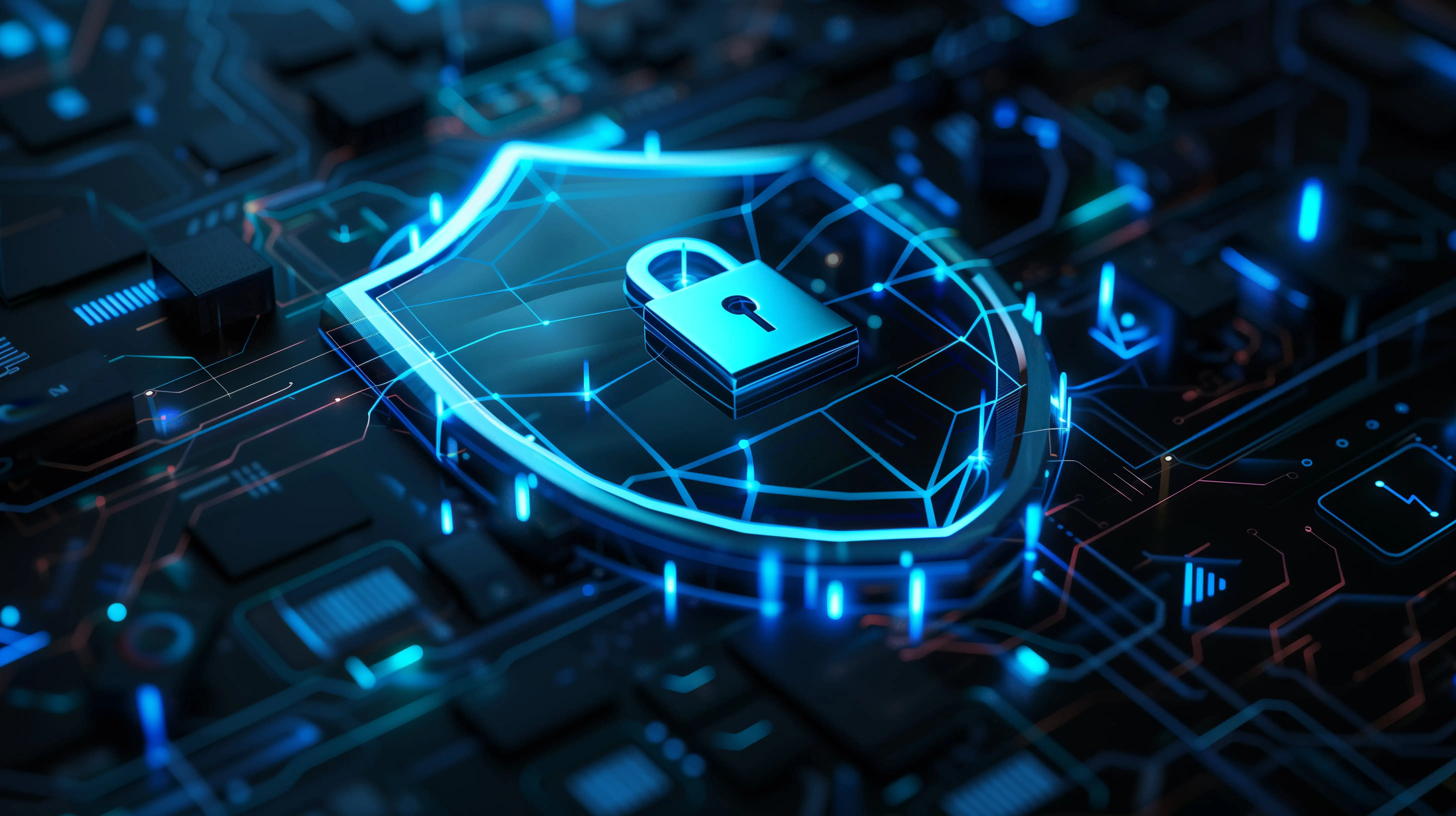Why Cybersecurity in Healthcare IoT Is Now Mission-Critical
Convenience has arrived at a price — the price of security. In an increasingly hyper-connected world, smart homes, wearable technology, connected vehicles, and healthcare systems continue to change our lives. The Internet of Things and cybersecurity have become mutually indivisible concerns. This rise in connected devices has not just opened doors to innovation but has also opened previously unimaginable attack surfaces. With billions of devices projected to be connected by 2030, the scale of cybersecurity and the Internet of Things is no longer a nicety — it's mission-critical, especially in healthcare environments where patient safety and data confidentiality are paramount.
The Rise of the Internet of Things (IoT)
The Internet of Things (IoT) is a vast network of physical devices, sensors, software, and other technologies that have been embedded into them to enable them to interact and share information over the Internet. From smart thermostats and medical implants to industrial robots and city-scale traffic systems, IoT devices are transforming industries across the board, including hospitals, clinics, and digital health platforms. But with that growth comes complexity, and with complexity comes exposure.
Organizations, particularly in the healthcare sector, are struggling with both the challenge of embracing IoT at scale and the risk that it becomes the Achilles' heel of their digital estate. That's where cybersecurity for IoT comes into play.
What Is IoT in Cyber Security?
What IoT is in cybersecurity is something we're coming to realize: the more that connect, the more we expose ourselves to the possibility of cyber attacks. In short, IoT in cybersecurity refers to the solutions, technologies, methodologies, and policies that go about safeguard IoT ecosystems against unauthorized access, data leakage, and system vulnerability.
Whether a pacemaker in a patient or a thermometer in a hospital food cart, security for IoT devices needs to provide confidentiality, integrity, and availability — the fundamental principles of information security in both general and healthcare-specific use cases.
Why IoT Requires a Cybersecurity Overhaul
Legacy cybersecurity designs were never designed to handle the volume and dynamic nature of IoT environments. Unlike servers or PCs, many IoT devices:
• Do not have substantial computing capacity to support antivirus software
• They are seldom patched or updated in a timely fashion
• Run on default passwords or insecure protocols
• Exchange data via unencrypted mediums
These combine to provide a rich source for exploitation. The notorious Mirai botnet assault in 2016, whereby hacked IoT devices were used to take down popular websites, laid bare the risks. The Internet of Things dangers exist and are intensifying, especially in healthcare, where such vulnerabilities can impact patient care and critical life-saving systems.
IoT Security Challenges and Threats
A scarcity of standardization, inadequate device hygiene, and insufficient user awareness have resulted in several Internet of Things security issues, including:
• Default or hardcoded credentials render devices vulnerable.
• Unencrypted data can be sniffed, stolen, or tampered with in transit.
• Unsupported software allows attackers to remotely hijack.
• Insufficiently secured interfaces open backend systems.
• Invasion of privacy: Always-on devices can harvest sensitive personal information without permission.
These weaknesses feed into the risks involved in IoT devices and further fuel the Internet of Things cybersecurity worries. Organizations — particularly hospitals, clinics, and digital health providers — must realize and work to bridge these loopholes to make the Internet of Things secure comprehensively.
Security Issues for the Internet of Things
Some security issues for the Internet of Things continue to remain, particularly large-scale implementations across healthcare, energy, and manufacturing:
- Device Variety: Various makers, operating systems, and protocols pose interoperability nightmares.
- Lack of Visibility: Most devices are at the edge and aren't under constant surveillance.
- Scalability of Security: Current firewalls and endpoint solutions don't scale for IoT.
- Attack Surface Explosion: All connected sensors represent a potential entry point.
- These aren't abstract concepts — Internet of Things attacks have actually brought down power grids, shut down manufacturing lines, and put human lives in harm. In healthcare, they can disable ICU monitoring devices or compromise patient records, making them potentially fatal.
Internet of Things and Privacy Issues
In addition to data theft, Internet of Things and privacy concerns are piling up. Smart speakers, fitness trackers, and connected medical devices can listen in, track behavior, and send sensitive data, usually without users being aware. It raises chilling concerns about consent, data ownership, and surveillance. The privacy concerns with the Internet of Things aren't only technical — they're ethical and legal as well, especially when it involves electronic health records (EHRs), telemedicine platforms, and patient-generated data.
The Threat of IoT Hacking
Hacking the IoT has become an easy, high-payoff endeavor for cybercrime. With exploit tools available in dark web chat rooms, newbie hackers can begin attacking vulnerable devices. Internet of Things hacking is no longer a movie plot — it's here and now.
An attacker using a single vulnerable device is the starting point for a lateral attack and, thereby, enters large-scale networks. This is due to these Internet of Things security issues, so cybersecurity structures must advance in an over-and-above form above perimeter mentalities — especially in healthcare ecosystems, where one compromised medical device can expose an entire hospital network.
IoT in Critical Infrastructure
As governments and industries move to digitize basic infrastructure — from traffic lights to water treatment facilities — the stakes are higher than ever. Security on the Internet in IoT of critical infrastructure is becoming a matter of life and death. A successful attack on IoT in these areas can shut down cities or pose a threat to human life, and hence, cybersecurity in IoT becomes a national security concern, even more so in public health infrastructure, such as emergency response systems, hospital power grids, and ambulance coordination platforms.
IoT in Healthcare: A Cybersecurity Imperative
Healthcare professionals are among the quickest to adopt IoT, employing connected devices for real-time monitoring, diagnosis, and treatment. But that makes them the most vulnerable to cybercriminals.
In this scenario, cybersecurity for IoT has to go beyond devices to encompass:
• Secure firmware updates
• Access control policies
• End-to-end data encryption
• Vulnerability assessments
Since medical devices tend to work inside or on the human body, the Internet of Things for security becomes an issue of physical safety as well as data security.
Internet of Things Security Standards and Solutions
A tide of innovation is meeting the Internet of Things security risks with tools and protocols like:
• IoT Network Segmentation: Segmenting devices from core networks
• Zero Trust Architecture: Removing implicit trust for each request
• IoT Device Identity Management: Allocation of cryptographic IDs to devices
• Threat Intelligence for IoT: Predictive identification of attack patterns
These are essential components in constructing a strong Internet of Things network security. They also counter the security challenges of IoT by using layered, adaptive, and predictive defenses, especially useful in healthcare networks that need to protect everything from infusion pumps to wearable heart monitors.
Cybersecurity Devices for IoT Defense
The market for cybersecurity devices specific to IoT is growing at a rapid pace. These are:
• IoT Gateways with embedded firewalls
• Security Sensors to identify anomalies
• Blockchain-based Devices for secure data logs
• Embedded Hardware Security Modules (HSMs)
These technologies are instrumental in handling security in IoT and reducing the Internet of Things risks, particularly in hospital IT environments, remote patient monitoring systems, and medical device networks.
IoT Security: Best Practices for Every Stakeholder
- Manufacturers need to incorporate security into hardware and software through design.
- Companies need to implement security monitoring tools designed specifically for IoT.
- Consumers need to update firmware, modify default settings, and reduce exposure.
- Governments need to put in place regulations, encourage public-private partnerships, and spend on cyber defense.
- The talk about cybersecurity IoT is no longer simply technological. It's about shared responsibility — especially in the healthcare industry, where regulatory frameworks like HIPAA and GDPR intersect with real-world patient outcomes.
The Role of AI and Machine Learning in IoT Cybersecurity
Anomaly detection and behavior analytics with AI are revolutionizing IoT cybersecurity. These technologies can alert to unusual behavior on thousands of devices in real time, delivering scalable, intelligent defense.
The intersection of AI, edge computing, and blockchain is changing cybersecurity for IoT, reversing reactive defense into proactive prediction. In digital health, this can mean detecting ransomware attempts in seconds or flagging suspicious activity in critical care networks.
Protect Your IoT Systems with Gini’s Healthcare Security
Don’t let vulnerable IoT devices compromise your patient data or operations. Gini delivers intelligent, healthcare-grade cybersecurity solutions that scale with you. Get complete IoT protection — from endpoint to cloud — all in one platform.





